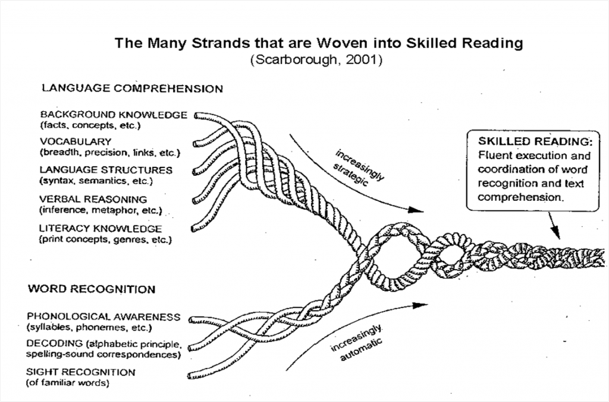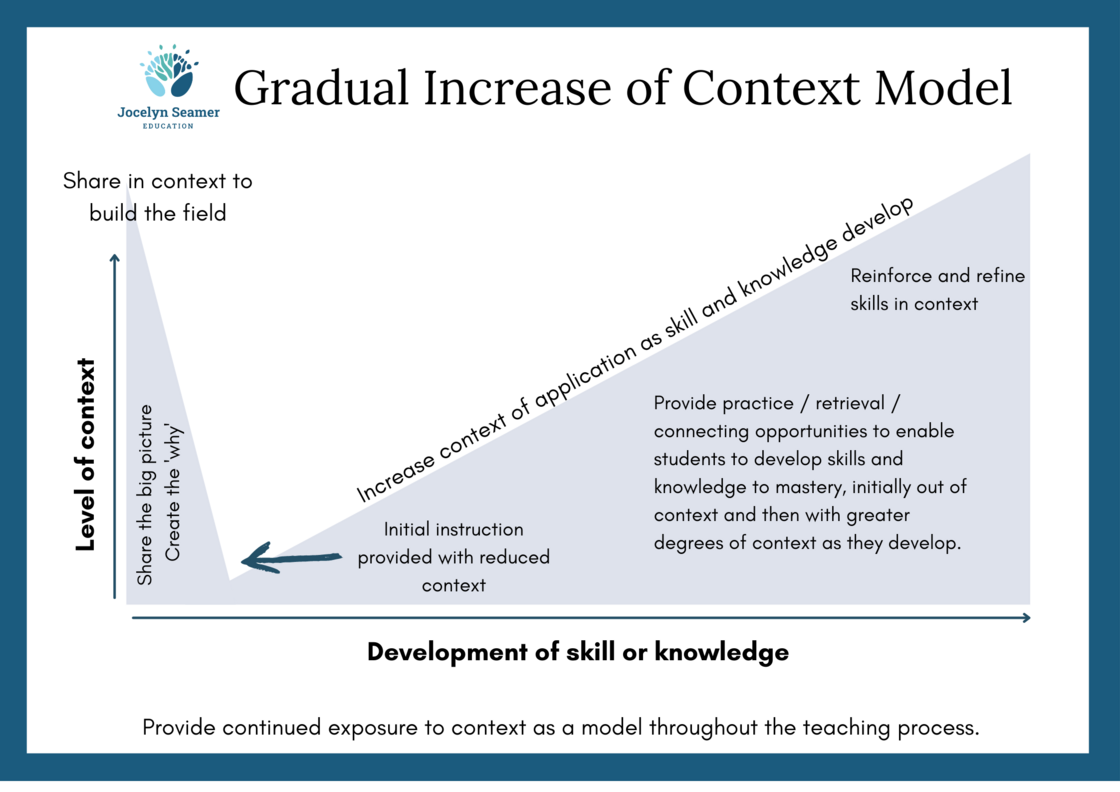Teaching the ‘Top of the Rope’ with Mentor Texts

There is so much information available about phonics and PA (bottom of the rope concepts) that you might be forgiven for thinking that that’s all there is to reading instruction.

Hollis Scarborough, the Many Strands That are Woven into Skilled Reading, 2001.
However, it is important to remember that the ‘top of the rope’ concepts also need to be taught explicitly. One of the best ways to teach this is through mentor texts. Mentor texts provide a wonderful stimulus for reading comprehension and writing instruction. You can teach many concepts through mentor texts, including:
- Vocabulary
- Sentence structure
- Parts of speech
- Text structure
- Characterisation
- The connections between text and images
- Language features

The lovely thing is that using mentor texts for in-depth units means that you are teaching concepts for both comprehension and writing at the same time. It isn’t necessary to teach about complex sentences for reading and then teach it again for writing. Each lesson involves both reading and writing (or drawing and speaking for younger students), just as we do for bottom-of-the-rope concepts.
Here are a few pointers for making this teaching effective:
1) Consider the role of context as you plan lessons.
While the mentor text provides context, there will still be a small amount of instruction taught in stand-alone, decontextualised lessons. Once students understand the concept of working with the mentor text, it then helps to refine and affirm those understandings as they relate to reading and writing.

2) Choose the text to meet the learning goals, not the other way around.
When choosing a text to use for a unit of work, we often base our choices on student preference or connection with another learning area and then select an English focus from there. While student preference and connection with other learning areas are important factors to consider, the primary reason you choose a text should be based on students’ learning goals. If you want to teach about expanding verb phrases, then make sure that the text has great verb phrases. If you want to teach about compound sentences, make sure that the text has compound sentences. This ensures that our unit is streamlined and provides a much more direct path to outcomes for our students.
3) Recognise that children need time to engage with a text and its concepts
I often see what I call shortie units that last for a week. These types of units have a place, but I much prefer to spend 4 or 5 weeks with a picture book giving students the chance to engage with the text from different perspectives. We might assume that students will make the deeper connections we want them to by asking a few careful questions, but this is often only the case for our most ‘switched on’ students. Suppose we want students to infer and interact with text at a deeper level (and, dare I say it, innovate on the text to write their own story?). In that case, we need to build background knowledge and vocabulary, let them engage in drama, break the text down, help the students unpack characters and text structures AND help them understand sentence structure, parts of speech and language devices. This just isn’t possible for students to do well in only a week of working with a text. If you want to use ‘shorty units’ in your classroom, base them on the books that the students are already familiar with and have heard over and over. If you want students to engage with unfamiliar, more complex texts, give them the time they need to do so.

4) Keep the goals simple
When planning to use mentor texts to teach top-of-the-rope concepts, keep your goals simple. I recommend having a text level, sentence level and word level goal for each text. Where possible, create a clear line of sight between each goal. For example, if your goal is for students to use descriptive language to describe a setting, make your sentence-level goal compound sentences with expanded noun phrases and your word-level goal adjectives. This way, the word and sentence level goals serve the text level goal. You aren’t trying to address three unrelated goals.
Looking for pre-written text based units to help save you time and the cognitive load of writing your own? The Resource Room has you covered.

 Jocelyn Seamer Education
Jocelyn Seamer Education
1 comment
I did this course last year and highly recommend it. I’ve been teaching 30 years and still learnt a lot. Money well spent.
Leave a comment